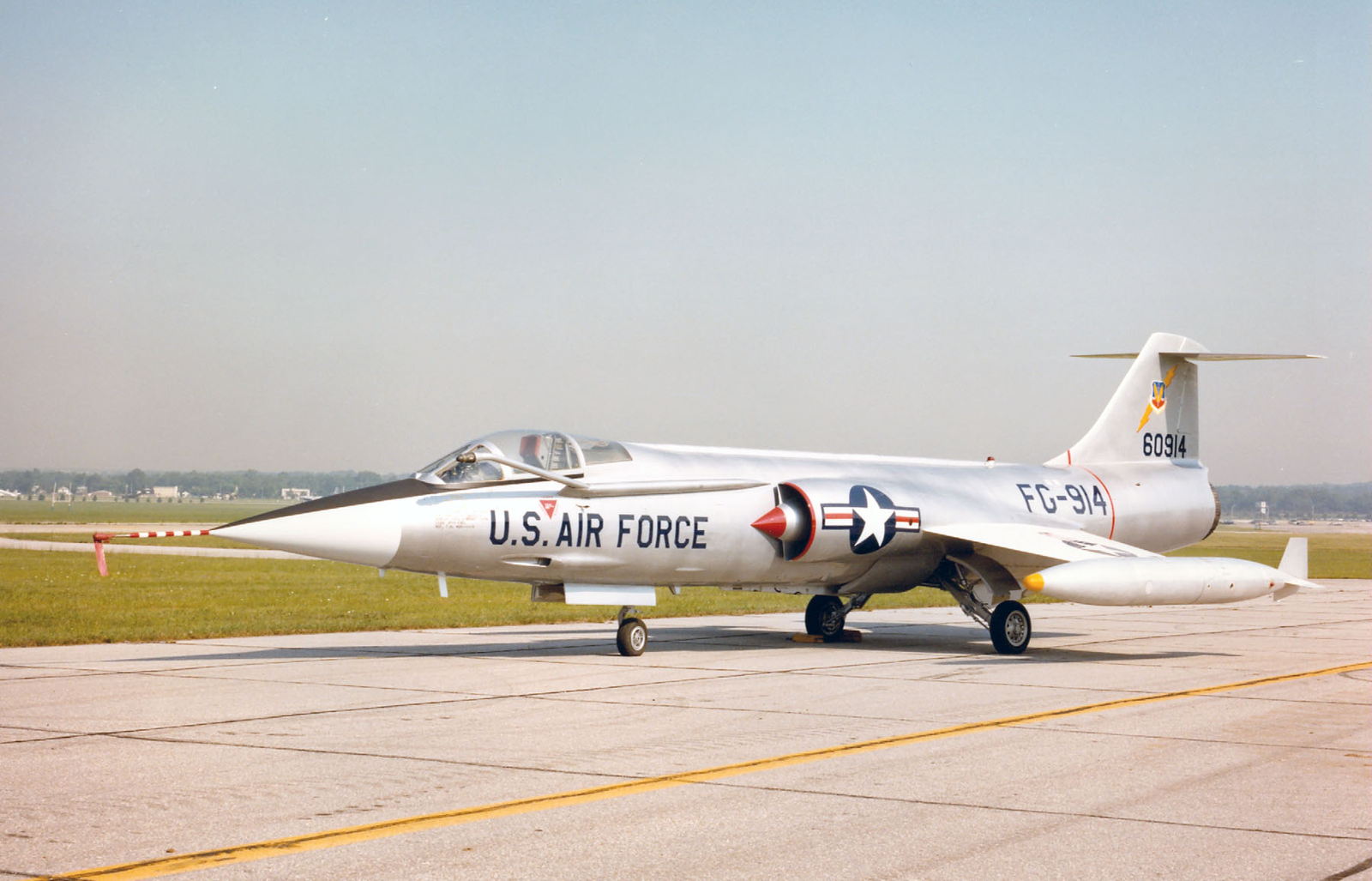
The Lockheed F-104 Starfighter stands as one of the most iconic—and controversial—aircraft of the Cold War era. Conceived in the early 1950s by the legendary Clarence “Kelly” Johnson, the Starfighter was designed to meet the urgent need for a high-speed, high-altitude interceptor that could counter the growing threat posed by Soviet bombers. Its development took place against the backdrop of a global arms race, where speed and technological superiority were seen as essential to national security.

The F-104 was a marvel of engineering for its time. It was the first combat aircraft capable of sustained Mach 2 flight, and its sleek, needle-like fuselage and dramatically short, narrow wings earned it nicknames like “the missile with a man in it.” The aircraft’s General Electric J79 engine delivered extraordinary thrust, propelling the Starfighter to record-breaking speeds and altitudes. In 1962, an F-104C stationed in Germany set an operational altitude record of 92,000 feet at Mach 2.5, a testament to its raw performance capabilities, as described by the New England Air Museum.

Yet, these same features that made the F-104 a technological leap forward also contributed to its infamous reputation for danger. The Starfighter’s short wings, while ideal for high-speed flight, left it with poor low-speed handling characteristics. Pilots had to maintain a high minimum airspeed to avoid stalling, making takeoffs and landings particularly treacherous.

The aircraft’s powerful engine, while impressive, could be difficult to manage during critical flight phases. The innovative electric flight control system, advanced for its era, was also prone to failure, sometimes leaving pilots with little chance of recovery.

These design challenges were compounded by operational realities. Many pilots, especially those in newly adopting air forces, received insufficient training on the F-104’s unique handling quirks. This lack of preparation, combined with the aircraft’s unforgiving nature, led to a disproportionate number of fatal accidents.

The Starfighter quickly acquired a series of grim nicknames—“Widowmaker,” “Death Tube,” “Flying Coffin”—that reflected the risks faced by those who flew it. As noted by Fly a Jet Fighter, the F-104’s accident rate became a somber lesson in the necessity of balancing performance with safety in military aviation.

Despite its reputation, the F-104 was adopted by air forces around the world. After West Germany joined NATO in 1955, it sought a modern fighter to fulfill its alliance obligations. Lockheed’s Starfighter was chosen for its advanced capabilities, but production and operational challenges soon emerged. Lockheed responded by sending experts to assist German engineers and by launching the Starfighter Utilization Reliability Effort (SURE), which provided technical support and troubleshooting. The company also funded specialized training programs for German pilots, which helped reduce accident rates and underscored the importance of thorough preparation for high-performance aircraft, according to Lockheed Martin.

The Starfighter’s operational history is as varied as it is dramatic. It served with the U.S. Air Force from 1958 to 1969, seeing action during the Second Taiwan Strait Crisis and the Vietnam War. After it retired from frontline U.S. service, the F-104 continued to fly with the Air National Guard and later with NASA for experimental and research missions. Internationally, the Starfighter was flown by 14 countries, with the Italian Air Force retiring the last operational military Starfighters in 2004.

The legacy of the F-104 is complex. On one hand, it pushed the boundaries of what was possible in jet fighter design, influencing subsequent generations of high-speed aircraft. On the other, its high accident rate forced the military aviation community to confront the dangers of prioritizing performance over pilot survivability. The lessons learned from the Starfighter era—about the need for reliable systems, comprehensive pilot training, and a balanced approach to risk—continue to inform the design and operation of modern military aircraft.

Today, the F-104 lives on not only in museums and airshows but also as a platform for aerospace innovation. Companies like Starfighters International, led by former Navy pilot Rick Svetkoff, have transformed retired Starfighters into testbeds for airborne research and technology development, operating out of the Kennedy Space Center and supporting a new generation of aerospace achievements.

The story of the F-104 Starfighter is a vivid reminder that technological progress in military aviation comes with both triumphs and tragedies. Its enduring influence is felt not just in the annals of history but in the ongoing pursuit of safer, more capable aircraft for the future.
